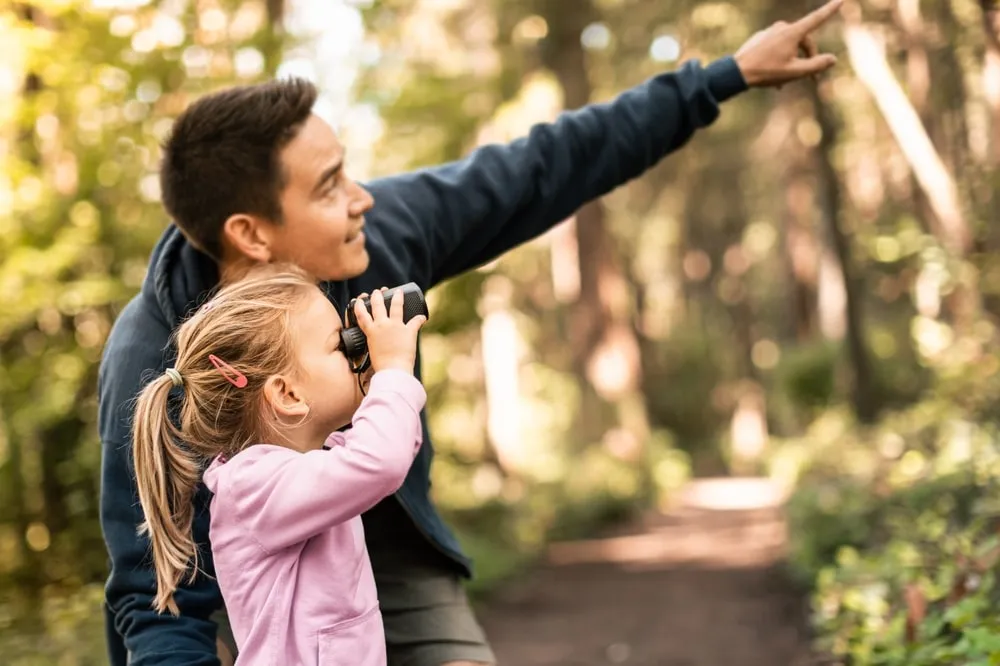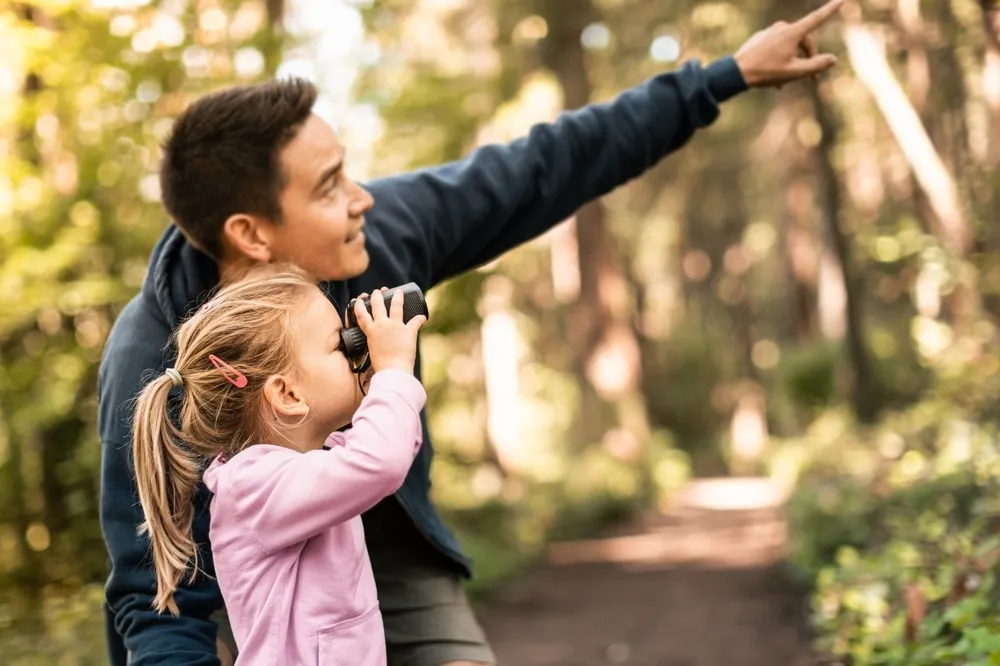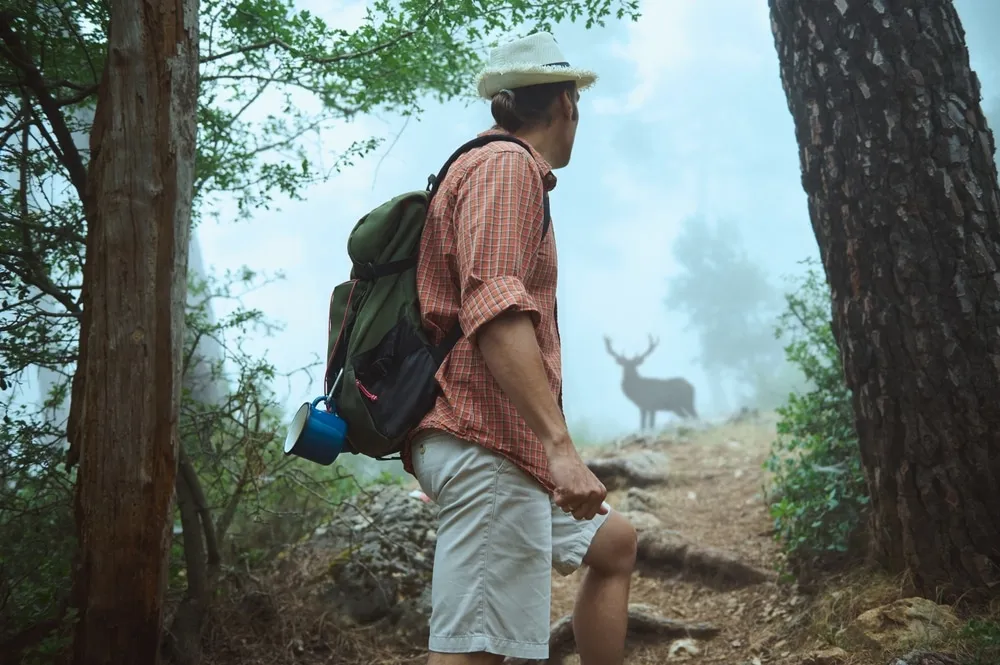
Wildlife Encounter Etiquette: The Complete Guide to Safe and Ethical Animal Interactions in Nature
As an experienced outdoor enthusiast who has spent decades exploring wilderness areas across North America, I've learned that proper wildlife encounter etiquette is essential for both human safety and animal welfare. This comprehensive guide shares practical tips, safety protocols, and ethical practices I've developed through countless adventures in places like Yellowstone, the Canadian Rockies, and Alaska's wild frontiers. Whether you're a beginner hiker or seasoned adventurer, understanding how to respectfully interact with wildlife will enhance your outdoor experiences while protecting the animals we all love to observe. Visit Nature Guests for more outdoor safety resources.
Understanding Wildlife Encounter Etiquette

When I first started exploring wilderness areas thirty years ago, I made countless mistakes that I now recognize as violations of proper wildlife encounter etiquette. I once followed a black bear family for nearly a mile in Glacier National Park, thinking I was being respectful by maintaining what I thought was a safe distance. It wasn't until a park ranger educated me about stress indicators in wildlife that I realized my well-intentioned observation was actually causing significant distress to the animals.
Wildlife encounter etiquette encompasses a comprehensive set of principles designed to protect both humans and animals during outdoor adventures. The foundation of ethical wildlife interaction rests on understanding that we are visitors in their home environment. Every animal, from the smallest chipmunk to the largest grizzly bear, has evolved specific behavioral patterns and territorial needs that human presence can disrupt.
In my years of guiding hikes through the Canadian Rockies, I’ve seen firsthand how proper wildlife encounter etiquette can transform an ordinary outing into an unforgettable experience. The magic happens when hikers understand that observing wildlife is a privilege, not a right, and that every choice we make on the trail impacts animal welfare. By keeping a safe distance, minimizing noise, and resisting the urge to feed or approach, we not only protect these creatures but also allow authentic, respectful encounters that honor their natural behavior and habitat.
Understanding animal behavior is crucial for implementing effective wildlife encounter etiquette. Animals communicate distress through various signals: rapid movements, vocalizations, changes in feeding patterns, or protective positioning around young. I've learned to read these signs during encounters with mountain goats on alpine trails and moose in wetland areas. Learning more about staying safe near cliffs can help you navigate challenging terrain where wildlife encounters are common.
Essential Safety Principles for Outdoor Adventures
Through decades of wilderness travel, I’ve come to appreciate that proper wildlife encounter etiquette is as much about respect as it is about safety. The cornerstone is distance—giving animals enough space to move freely without feeling threatened. While the National Park Service recommends at least 100 yards from bears and wolves and 25 yards from other species, in practice I’ve often found that even greater distances create safer, calmer encounters. Beyond spacing, awareness and preparedness—such as carrying binoculars, using telephoto lenses for photography, and avoiding sudden movements—help ensure that both you and the wildlife remain safe while preserving the natural rhythms of their habitat.
Making noise while hiking represents another cornerstone of effective wildlife encounter etiquette. During my solo backpacking trips through bear country in Alaska, I developed a habit of calling out "Hey bear!" every few minutes and clapping my hands when approaching blind corners or dense vegetation. This simple practice has prevented countless surprise encounters that could have escalated into dangerous situations.
Essential Safety Equipment
Every outdoor enthusiast should carry bear spray as the most effective non-lethal deterrent available. I recommend the SABRE Frontiersman Bear Spray for its proven effectiveness and 30-foot range.
🛡️ Get Bear Spray on AmazonProper food storage constitutes a fundamental aspect of wildlife encounter etiquette that many outdoor enthusiasts overlook. During my camping experiences in Yellowstone and Grand Teton, I've witnessed the consequences of improper food storage firsthand. Bears that become habituated to human food sources often must be relocated or euthanized, representing a tragic failure of human responsibility.
Understanding seasonal patterns enhances wildlife encounter etiquette effectiveness. Spring brings protective mothers with newborn young, while fall triggers increased activity as animals prepare for winter. I always consult with local park rangers about recent wildlife activity before embarking on hiking trips. Resources like hiking trip risk assessment provide valuable frameworks for planning safe outdoor adventures.
Species-Specific Encounter Protocols

Different wildlife species require specific approaches within the framework of wildlife encounter etiquette. My most intense wildlife encounter occurred during a backpacking trip in Montana's Glacier National Park when I rounded a corner to find a grizzly bear feeding on huckleberries just fifty yards ahead. The protocols I had practiced countless times became instinctual: I stopped immediately, avoided direct eye contact, and began backing away slowly while speaking in calm, low tones.
Bear encounters demand the highest level of wildlife encounter etiquette precision due to their unpredictable nature and physical capabilities. Grizzly bears and black bears require different response strategies. With grizzlies, playing dead during an attack may save your life, while fighting back aggressively represents the recommended response to black bear attacks. I carry detailed species identification cards to ensure proper protocol implementation during high-stress encounters.
Mountain lions present unique challenges for wildlife encounter etiquette due to their secretive nature and ambush hunting style. During my hiking experiences in Colorado and California, I've learned to recognize fresh tracks, scat, and scratch marks on trees that indicate recent mountain lion activity. If you encounter a mountain lion, the cardinal rule is never to run, as this triggers their chase instinct.
Ungulates like elk, moose, and deer often appear docile but can become extremely dangerous during rutting season or when protecting young. I've witnessed bull elk charge hikers who ventured too close during September mating season in Rocky Mountain National Park. Proper wildlife encounter etiquette requires understanding these seasonal behavioral changes and adjusting your approach accordingly. Understanding checking trail difficulty helps you prepare for areas where wildlife encounters are more likely.
Ethical Wildlife Viewing and Photography
Photography has revolutionized wildlife viewing, but it has also complicated wildlife encounter etiquette implementation. Social media's influence has created pressure for increasingly dramatic wildlife photographs, often at the expense of animal welfare. During my photography workshops in national parks, I emphasize that ethical wildlife photography requires patience, respect, and proper equipment rather than proximity to subjects.
The "selfie culture" represents one of the most dangerous trends affecting modern wildlife encounter etiquette. I've documented numerous instances where visitors attempt to pose with bison in Yellowstone or approach elk for smartphone photographs. These behaviors not only endanger the individuals involved but also habituate wildlife to human presence, creating long-term conservation problems.
Professional Wildlife Viewing Equipment
Quality binoculars enable close observation while maintaining proper distance. I recommend high-powered binoculars for ethical wildlife viewing that doesn't disturb animals.
🔭 Shop Binoculars on AmazonEthical wildlife encounter etiquette extends beyond individual behavior to encompass broader conservation awareness. Every wildlife interaction should contribute to species protection rather than exploitation. I encourage outdoor enthusiasts to support organizations dedicated to habitat preservation and wildlife research through their purchasing decisions and recreational choices.
Night photography presents special considerations for wildlife encounter etiquette implementation. Flash photography can disorient nocturnal animals and disrupt their natural behaviors. During my night photography sessions in desert environments, I use red-filtered lighting and maintain even greater distances from subjects to minimize disturbance. Learning about packing safety gear for hiking ensures you're prepared for extended wildlife observation sessions.
Essential Gear for Safe Wildlife Encounters
Proper equipment significantly enhances your ability to implement effective wildlife encounter etiquette while maintaining personal safety. After three decades of wilderness exploration, I've refined my gear selection to include items that support both wildlife observation and emergency preparedness. The foundation of any wildlife-watching kit should include bear spray, emergency signaling devices, and high-quality optics.Bear spray represents the most critical piece of safety equipment for implementing wildlife encounter etiquette in bear country. I've carried bear spray on every wilderness trip for the past twenty years and have deployed it successfully three times during surprise encounters. The key lies in accessibility—bear spray must be immediately available, not buried in your backpack. I recommend practicing deployment regularly to ensure muscle memory during high-stress situations.
Emergency Communication
An emergency whistle can save your life during wildlife encounters. The 3-in-1 Emergency Whistle with Compass provides multiple survival tools in one compact device.
🚨 Get Emergency WhistleField identification guides enhance your understanding of local wildlife species and support informed wildlife encounter etiquette decisions. I carry regional guides specific to each area I visit, as species behavior and distribution patterns vary significantly across different ecosystems. Understanding animal identification helps you anticipate behavioral patterns and adjust your approach accordingly.
Technology can support wildlife encounter etiquette when used appropriately. GPS devices enable precise location sharing with rescue services, while wildlife tracking apps help identify recent animal activity in specific areas. However, I emphasize that technology should supplement, not replace, fundamental outdoor skills and situational awareness. Smartphone batteries fail, but proper wildlife encounter etiquette knowledge remains constant.
Wildlife Education Resources
Quality field guides improve your wildlife knowledge and safety. I recommend comprehensive wildlife identification guides for your specific region.
📚 Shop Field GuidesBuilding Respect for Natural Habitats
True wildlife encounter etiquette extends beyond individual animal interactions to encompass comprehensive habitat protection and environmental stewardship. During my conservation work with various wildlife organizations, I've observed how human recreation patterns can fragment wildlife corridors and disrupt essential animal behaviors like migration, feeding, and breeding.
Leave No Trace principles form the foundation of habitat-conscious wildlife encounter etiquette. Every item you carry into wilderness areas should return with you, and your campsite should show no evidence of human occupation after departure. I've spent countless hours teaching these principles to hiking groups, emphasizing how seemingly minor impacts accumulate into significant ecological disruption over time.
Seasonal sensitivity represents a crucial aspect of advanced wildlife encounter etiquette that many outdoor enthusiasts overlook. Spring birthing seasons, summer nesting periods, fall migration routes, and winter survival strategies all require specific human behavior modifications. I adjust my hiking routes and camping locations based on these natural cycles, often choosing more challenging terrain to avoid sensitive areas during critical periods.
Trail selection directly impacts your ability to practice responsible wildlife encounter etiquette. Well-established trails concentrate human impact and reduce habitat fragmentation compared to off-trail travel. However, I encourage exploring less popular trails to reduce crowding pressure on wildlife in heavily visited areas. Resources like comprehensive information about wildlife encounter etiquette provide detailed guidance for various trail conditions.
Conclusion
After thirty years of wilderness exploration and wildlife observation, I've learned that proper wildlife encounter etiquette represents both an art and a science that requires continuous learning and adaptation. Every animal encounter provides opportunities to refine your approach and deepen your understanding of wildlife behavior patterns. The principles outlined in this comprehensive guide form the foundation for ethical outdoor recreation that benefits both humans and animals.
The future of wildlife conservation depends on outdoor enthusiasts who practice responsible wildlife encounter etiquette and share this knowledge with others. Climate change, habitat fragmentation, and increasing recreational pressure create new challenges that require adaptive management strategies. By implementing these proven protocols, you contribute to wildlife protection while enjoying meaningful outdoor experiences.
I encourage every outdoor enthusiast to view wildlife encounter etiquette as an ongoing education process rather than a static set of rules. Animal behavior research continues to evolve our understanding of human-wildlife interactions, and staying informed about current best practices enhances your effectiveness as a responsible nature observer. Regular training updates and hands-on practice ensure your skills remain sharp during critical encounters.
Remember that every wildlife encounter represents a privilege that carries significant responsibility. The memories you create through ethical wildlife observation will last a lifetime, while the positive impact of your responsible behavior extends far beyond your individual experience. Whether you're planning your first wilderness adventure or your thousandth, implementing proper wildlife encounter etiquette ensures that future generations can enjoy the same magical experiences that have enriched your outdoor pursuits.
Start Your Safe Wildlife Adventure Today!
Equip yourself with the essential gear and knowledge needed for ethical wildlife encounters. Remember, proper preparation prevents poor performance in the wilderness.
🎒 Shop Wildlife Safety GearVisit our comprehensive safety resources and plan your next adventure responsibly.
© 2024 Nature Guests - Your Guide to Safe Outdoor Adventures
For more outdoor safety tips and wilderness guidance, visit NatureGuests.com

